The following is a list of Past Presidents and their messages to the STAO membership at the end of their presidency.
1992-1994 - Paul Weese
 My two years as President of STAO are remembered as a time of tremendous financial pressure, I thought many times that I did not want to be remembered as the last President of the Association. As a result of careful control of expenses and a successful STAO conference, we did survive and in fact, established many policies and procedures to ensure the financial viability of STAO for years to come.
My two years as President of STAO are remembered as a time of tremendous financial pressure, I thought many times that I did not want to be remembered as the last President of the Association. As a result of careful control of expenses and a successful STAO conference, we did survive and in fact, established many policies and procedures to ensure the financial viability of STAO for years to come.
Another thought that frequently crossed my mind was “‘What would happen if there were no STAO?”, On the surface, there would be no Crucible nor Annual Conference, the most tangible results of membership. But the largely unseen work of STAO has affected what and how science is delivered in the classroom. The liaison that STAO has developed with the Ministry of Education and Training, SCCAO and science suppliers has influenced curriculum and pedagogy – The work of the STAO Safety Committee has raised teachers’ awareness of risk and hazards in the laboratory setting.
STAO continues to be the collective voice of science educators in this province. Through the commitment of its Executive, and Board and the support of science teacher through membership is has and will continue to promote excellence in science education through leadership and service.
1994-1995 - Malisa Mezenberg
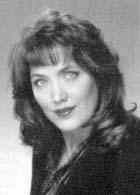 It is amazing how quickly another year slips away. As part of the teaching cycle, it is important to reflect upon the events of the past year, and look forward to what might be in store in our future.
It is amazing how quickly another year slips away. As part of the teaching cycle, it is important to reflect upon the events of the past year, and look forward to what might be in store in our future.
It has been a year of living with the ramifications of the implementation of the Transition Years Document, and most recently how to deal with the directions outlined by the recommendations of the Royal Commission on Leaming. Educators at all levels of education are expected to implement these changes and deal with increasing responsibilities with decreasing resources. The policies and programs needed to implement the educational priorities of this government will be most interesting. More than ever the expertise of our members will be required to provide a voice in the newly fon-ning parent groups and partnerships arising from the various sectors of society.
As an association, we have continued to gain much esteem from the successful activities this Association has undertaken in the past year. As various sectors of society are becoming more involved with the educational process, members of our Association are continually approached to provide expertise and counsel on numerous steering and review committees. It is about time we are recognized as the network of experts in the field of science education! The Ministry of Training and Education has invited STAO to provide consultative advice in review of SAIP and the Junior Science Instrument Pool and we are able to act as a subject advisory group to organizations such as TVO, OTF Curriculum Forum, Royal Society of Canada, Science Network of Ontario, Curriculum Clearinghouse, Women’s Directorate, G.E.N.E., Deep River Academy of Science, Canada-Wide Science Fairs and other such groups.
Teacher development and empowerment are issues facing all our members. Conferences remain as a major networking of people and ideas within our organization. STAO’94 has proven itself to be one of the most successftil and profitable conferences ever held by the Association. We are all indebted to Conference Co-Chairs Bob Giza and Nadine Wright and their committees for their many hours of hard work resulting in a top-rated conference. At this time, Board members are in coordinating positions of upcoming regional conferences in Thunder Bay and North Bay. STAO ’95 is shaping up beautifully under the creativity and energy of STAO’95 Chair Irwin Talesnick and his many comnlittees (see page 24 for further details). And further down the line, the planning is beginning for the joint STAO-NSTA (National Science Teachers’ Association) Conference scheduled for November 1996.
In the past two years, our Association has been reshaped by the process of change. We have carefully reviewed and rewritten sections of our constitution, and by-laws, and are now reviewing the policy and procedures document. This review process has caused us to reexamine the purpose of STAO, and in the face of so many other changes, restructure the way we operate to address the changing needs of our membership and allow us to function more effectively as an organization. We must continue to focus on who we are and what we can do as an association to assist our profession in offering the best science education possible to the students of Ontario. After all, they are why we are teachers.
How do you fit in? STAO is run on the time and commitment of its members. Give me, or someone on the Board a call, indicating what aspect of science education you might be interested in becoming involved with. All of us have talents and with STAO’s breadth of initiatives, all of us can find a way to express those talents in STAO. We, as an association, are only as informed, networked and active as our individual members! Trust me, you will get much more out of the Association than you contribute.
It is hard for me to believe my term of office as President has ended. The pace has been hectic, but the rewards have been plentiful. This year has been most rewarding personally and professionally. Three years ago I would not have believed it possible that I could represent such a prestigious association, never mind run a Board meeting. It has been the tremendous support and counsel of my Executive and Board of Directors that have allowed me to see and develop the potential within me. For this, and the honour of working with such dedicated, first-class educators attracted to STAO, I thank you. One of my favourite quotes comes from Giovani Ruffini, “A teacher is like a candle which lights others in consuming itself.” STAO has helped me to rekindle my light, without being consumed by the demands of the teaching profession.
1996 - Ian Mackellar
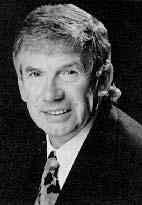 STAO has been extremely active this past year. The following highlights some of the initiatives and activities that have been undertaken. Much hard work has been devoted to these initiatives and, I am proud to say, a great deal has been accomplished.
STAO has been extremely active this past year. The following highlights some of the initiatives and activities that have been undertaken. Much hard work has been devoted to these initiatives and, I am proud to say, a great deal has been accomplished.
During 1995/96, implementation of the new Association organizational structure was a key priority. Regional Councillors and Chairs of standing committees now play a more strategic role in Association decision-making and policy development.
Conferences remain an important vehicle for the professional development of science educators and STAO ’95 was a huge success. Plans for the joint STAO/NSTA Conference scheduled for November 21-23, 1996 are almost complete and planning for a joint STAO/TELG conference in 1997 is underway.
A more recent action has been the establishment of the STAO Curriculum Initiatives Fund (March ’96). This will be used to encourage STAO members to produce and share exemplary science curriculum materials. It is important that we share with each other our strategies and ideas for enthusing and exciting students so that we do not have to develop everything in isolation.
Looking to the future, we must continue to pursue the six Association priorities identified in the November 1995 Crucible. The challenge for STAO is to work to influence developments in ways which reflect the views of its members. This includes making representation in the other world of “official science”, where the curriculum decisions which directly impinge on teachers and their “freedom to manoeuvre” are made. We must continue to be proactive and maintain a close liaison with the Ministry of Education and Training. The Pan-Canadian Science Project, development of provincial standards, the establishment of the College of Teachers and the Secondary School Reform Project are all current initiatives presently underway which STAO must endeavour to influence. With the elimination of many positions of curriculum science coordinators and consultants throughout the Province, STAO’s role in coordinating curriculum change and implementation should increase greatly.
As we become steeped in the ramifications and minutiae of impending curriculum change in the next year or so, we must not lose sight of our mission statement “to encourage excellence in science education through leadership and service”. We should continue to recognize that school science has two aims: it must provide a basis for further study for the minority of students and access to basic “science literacy” for all. We must also continue to help maintain teachers’ interest and enthusiasm for science by giving them access to information about the latest science discoveries in addition to opportunities for continued professional development. Now, more than ever, science teachers have a role to play in promoting science as a relevant, interesting and exciting subject to study so that more of our students are inspired to pursue further studies in the sciences and ultimately contribute to the future of our nation.
I believe that the Organization is on a firm foundation both from the organizational and financial points of view. Thank you, the members, again for the opportunity to serve you. I look forward to my year as immediate Past President.
1997 - Dan Eberwein
 As Past-President, one of my duties is to compile this Annual Report which sums up the activities and successes of the past year. At the beginning of the year, a “STAO Action Plan” (printed in the Crucible) was developed for implementation. Now, after the year is completed, I am pleased and proud to tell you that much has been accomplished.
As Past-President, one of my duties is to compile this Annual Report which sums up the activities and successes of the past year. At the beginning of the year, a “STAO Action Plan” (printed in the Crucible) was developed for implementation. Now, after the year is completed, I am pleased and proud to tell you that much has been accomplished.
With respect to “Association Structure”, the Policy and Procedures section of the Councilor’s Handbook has been revised, a Conference Planning guide is well under way, and new Manuals are in the hands of all STAO Board members. The Membership office has been monitored and effectively communicates with all members.
“Communication” was a major thrust in this plan. A STAO web site at http://www.stao.org now connects all members having access to the Internet to information about our organization and upcoming Conferences. All but two of the Board now has Email in place for effective communication. STAO was represented at the Ontario Curriculum Project throughout the year, effectively communicating concerns of science education to the Ministry of Education and receiving information about changes in education to our organization. Many relationships with other subject associations have been established in this way.
STAO has been active in ’96/’97 with respect to “Resources”. New resources written by teachers for teachers were commissioned and completed. Two of these are available for purchase at this Conference. Micro-Scale Science continues to be developed and tested as a new valuable resource for teachers in Ontario. Guidelines for Lab Renovation are currently being completed by the STAO Safety Committee.
“Professional Development” continues to be a focus of STAO. An excellent conference attracting over 2100 teachers from Ontario and the northeastern United States was held in November of 1997. STAO participated with NSTA, forging a new working relationship, to bring quality PD for both secondary and elementary educators. Region 1, “The Northern Region”, held a successful regional conference and STAO participated with “Let’s Talk Science” at another conference in the spring of 1997. Letters written to the Ontario College of Teachers have resulted in a relationship forming with STAO representation and participation and monitoring by OCT at STAO ’97. STAO also continues to break new ground by offering an integrated conference with technical educators at SCI-TECH ’97.
STAO has assumed a strong “Leadership” role in the following ways. STAO was represented in Ottawa for the setting of science standards for age 13 and 16 students in Ontario. STAO worked cooperatively with SCCAO, the ASAP project and MOET in the revision of the Pan Canadian Science Project Drafts and to write Illustrative Examples for the same project. STAO was represented on the “Expert Panel” to define Science Literacy, set new curriculum directions, identify health and safety needs, and make recommendations with respect to the role of technology, out-of-classroom learning experiences, cooperative education and many other areas.
“Financial Security” has been assured by continuing our membership drive for new Corporate members. Sound business decisions, resource development and membership involvement continues to be our strengths as our 108 year history continues.
I believe that STAO is on a firm foundation from both an organizational and financial point of view. I have found this year to be rewarding both personally and professionally. It has been a pleasure to work with so many people committed to the advancement of science education in Ontario. My sincere thanks to all Board members for their diligence and dedication. My thanks also to the Executive for their invaluable guidance and support. Finally, thank you, the members for the opportunity to serve.
1998 - Cathy Nevins
 Writing my final President’s message for the Crucible gives me occasion to pause and reflect on the year that has passed. 1997-1998 presented many challenges both to educators and to your STAO Executive and Board.
Writing my final President’s message for the Crucible gives me occasion to pause and reflect on the year that has passed. 1997-1998 presented many challenges both to educators and to your STAO Executive and Board.
In November, the success of SCI-TECH 97, the annual STAO conference in Toronto, was threatened by the uncertainty of provincial turmoil. Proudly, STAO came through with a conference that was in keeping with the tradition of excellence that STAO members have come to expect. Co-chairs Kyn Barker and Ed McArthur, along with their very dedicated committee members, rose to the occasion to produce an exemplary professional- development opportunity for science and technology participants from across the province.
With the release of the Pan-Canadian Common Framework of Science Leaming Outcomesfor Grades K-12, came criticism from journalist David Frum who suggested that Canadian students were being excused from learning science content. STAO responded with a letter expressing the value of the creation of such a national vision for science education which puts an emphasis on scientific literacy.
The expected release of the Ontario Cufficulum grades 1-8, science and technology document in November was delayed, which disappointed many educators. Only in April did the document arrive in our schools.
STAO will be present and involved in training opportunities presented by the Ministry of Education. In keeping with our vision to assist and support our members, we will develop and provide workshops and sessions on the new policy document at local, regional levels as well as provincially over the next few years as the implementation phase unfolds.
STAO is involved in supporting a bid to the Ministry of Education for the Development of the Science Course menu at the secondary level. Secondary School Reform will be important for all of Ontario and STAO intends to support its members in the areas of Curriculum and Professional Development.
As I end my year as President I want to acknowledge all that STAO has given me on both a professional and personal level over the past several years. It has been my honour to serve the membership of STAO.
I want to extend my sincere gratitude to the Executive and the Board of STAO for their support and friendship as I have leamed the magnitude of the role that being the President of such an organization entails. I have leamed that when the good of this organization remains the priority, clarity and focus in difficult decision-making ventures becomes less of a challenge. STAO is a solid group of individuals who, together, strive for the increased excellence of this organization.
I want to thank Brenda Kosky and Shayla Gunter at the Crucible office for their gentle reminders about deadlines for articles and their endless patience as they work alongside many to create the outstanding quality magazine we have come to expect from STAO.
Finally, my sincere thanks to our members for continuing to remain committed to the organization and to science education for o’ur students.
On behalf of your Board and Executive, I wish you a restful summer to rejuvenate and to allow yourselves time to prepare for the excitement that will be ours in science and technology education in the new school year.
1999 - Megan O'Mahony
 Thank you for the honour of allowing me to represent you, the Science Teachers of Ontario, for this year. It has been busy, but also a time of professional growth for me. For that, I thank you. I have, with the help of your Board of Directors and the rest of the Executive, done my best to ensure that the collective voice of Ontario Science Teachers has been heard in the feedback sessions for the new curriculum documents as developed by the MET and writing teams, in our development and delivery of Science Now!! workshops, and through our involvement with other associations and initiatives.
Thank you for the honour of allowing me to represent you, the Science Teachers of Ontario, for this year. It has been busy, but also a time of professional growth for me. For that, I thank you. I have, with the help of your Board of Directors and the rest of the Executive, done my best to ensure that the collective voice of Ontario Science Teachers has been heard in the feedback sessions for the new curriculum documents as developed by the MET and writing teams, in our development and delivery of Science Now!! workshops, and through our involvement with other associations and initiatives.
Welcome to Ross Haley, the incoming President for 1999-2000! Ross has been Secretary of the STAO Exec for a number of years before moving into this position. Ross … you are going to do a great job!
This has certainly been a learning year in terms of understanding what controls Ontario’s education. I have gained a huge respect for those bureaucrats who work in MET; they work very hard and are aware of the educational process. I thank them for their work! However, I now feel very strongly that politicians should be kept at arms-length from educational policies. They are in this business for the short term and often for personal vs. student gain. The lack of vision as well as dearth of knowledge, and understanding of education they consistently display is also displayed in our new curriculum!
We are going through major curriculum changes right now. I reiterate that change is needed … it is time to update our curriculum. It needs to be for our students… to prepare them for their futures … not to prepare them to obtain a “top mark” on a content-based federal/international test. Our students need to be knowledge workers, not knowledge regurgitators!
It is interesting that little attention has been paid to some of the results from TIMSS ’95, which has shown that the curricula of both Canada and the United States is far too broad, and with too little depth. Our new proposed curriculum certainly does breadth well! Hopefully, the feedback sessions will improve on this aspect.
Educators at all levels are aware that it is not possible to “deliver” the volume of the new Ontario curriculum using effective pedagogical strategies based on research on how students learn. Yet, the MET politicians consistently ignore reality when it is not part of their platform. Most groups, if not all, have requested that MET show in a timeline, exactly how and where the curriculum topics could be taught given the number of class periods we have to work with.
Curriculum is more than just a Ministry bound document! Publishing such a document does not constitute a “new curriculum”. Thank heavens the delivery of this curriculum is in our hands … we, the professionals in education. As you conveniently ignore the realities of knowledge acquisition vs. learning, rote learning vs. understanding and application as well as the social dynamics of society which is reflected in our classrooms, we work to teach the person … our student. You claim that students need “real-life” experiences so insist on community service hours … without taking any responsibility for how this can be done. You do remove support for students in apprenticeship programmes though. Why?
Our students need a curriculum that challenges them to be knowledge workers (a good description is given in the current Trends and Issues Alerts) which includes the higher level skills of analyzing, synthesizing, and evaluating “knowledge” to solve new problems. Creative and computer skills are essential for this. If all the content of our “new” curriculum document is disseminated to students, there will not be time to develop much beyond the lower level skills of knowledge acquisition. Current (and not so current) research shows this time requirement clearly!
We, as teachers, need to spend more of our time educating the general public about education and our students’ needs. If more people understood the reality, then fewer people would be caught by government propaganda. We can do this collectively, but I suspect that as individuals, we can have a huge influence as well. Education is a “hot topic”…it comes up in many conversations. It is amazing what a calm and fact-based response can do to help others understand.
2000 - Ross Haley
 Another school year is ending, but the STAO Board and Executive members are still very busy on your behalf. The Regional Councillors hope that each and every school uses the STAO Bulletin Board Banner to highlight science and technology information. The Board of Directors meets again in the summer to give the incoming President Greg Finn, some further direction for his year. Have you visited the Website http://www.stao.org/ to add your ideas? Our Professional Development activities include the Science Works workshops for teachers of grades 7, 8 and 9, as well as some implementation sessions for grade 10 teachers. We have been very busy developing a partnership with Texas Instruments to provide workshops to teachers at any time required as well as at the annual STAO 2000 Conference. Our Safety Committee has created through a partnership the Be Safe document, which all elementary schools should have to guide their science programs. Workshops to support this new document are also being planned.
Another school year is ending, but the STAO Board and Executive members are still very busy on your behalf. The Regional Councillors hope that each and every school uses the STAO Bulletin Board Banner to highlight science and technology information. The Board of Directors meets again in the summer to give the incoming President Greg Finn, some further direction for his year. Have you visited the Website http://www.stao.org/ to add your ideas? Our Professional Development activities include the Science Works workshops for teachers of grades 7, 8 and 9, as well as some implementation sessions for grade 10 teachers. We have been very busy developing a partnership with Texas Instruments to provide workshops to teachers at any time required as well as at the annual STAO 2000 Conference. Our Safety Committee has created through a partnership the Be Safe document, which all elementary schools should have to guide their science programs. Workshops to support this new document are also being planned.
The Curriculum Committee offered an incentive to create teacher materials under the name Curriculum Initiatives. We had much less response than expected. We would like to create and share many exemplary units to assist teachers in developing the best science and technology they can in each class. Watch for further opportunities for you to get reimbursed for contributing in this way.
The Elementary Committee has been very busy promoting new membership. Many teachers took advantage of the membership offer. Implementation in the elementary level is just beginning to become embedded in the daily activities of each classroom. Let us know what you still need to further develop your skills and lessons. With our connections to the Ministry, many teachers will have benefited from the writing, reviewing, field-testing and guidance done by STAO members. Much more work needs to be done to continue effective change in the classrooms, but we will continue to represent you effectively where necessary.
This summer there will be opportunities to take part in some Summer Institutes. STAO had a large role in the Secondary workshops but not the Elementary ones. We and other subject associations are concerned that we were not consulted by EFTO in planning the summer science and technology sessions for elementary teachers. By now you should have received some information regarding the best P.D. opportunity available in this province STAO 2000 A Millennium Celebration. Excellent keynote speakers, featured speakers, workshops and commercial presentations are already programmed in. We will have off-site opportunities which you will need to respond to much earlier to book a place. I wish to thank the membership for supporting STAO so well in my year as President. I have enjoyed the professional growth opportunity and hope that many of the new teachers will take the volunteer plunge with STAO in the future. I look forward to meeting many of you who will come to the Regal Constellation in Toronto November 24, 2000 to celebrate this millennium.
I will continue to contribute to science teachers in my retirement years, which begin shortly.
2000-2001 - Greg Finn
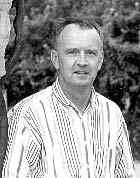 The end of the school year is near. At the time of writing this message I am proctoring a second year optical mineralogy exam and in three days, I will be off to the Sudbury/Elliot Lake area to run a field course. So my summer is already underway, now if the weather would only cooperate and give us some decent spring weather, we will be set!
The end of the school year is near. At the time of writing this message I am proctoring a second year optical mineralogy exam and in three days, I will be off to the Sudbury/Elliot Lake area to run a field course. So my summer is already underway, now if the weather would only cooperate and give us some decent spring weather, we will be set!
This past year has been one of many accomplishments for your organization – STAO. I would like to highlight just some of the projects/initiatives that contributed to STAO’s reputation as the premier science organization in the province.
First, the publication of the Be Safe! booklet this year was greeted with great acceptance by elementary educators, not just in Ontario but elsewhere in Canada. We have not quite reached our goal of having copies of this resource in the hands of every elementary teacher in the province, but we are getting there. If you have not seen a copy of the Be Safe! document in your school, why not order it today? To ensure that this resource will be made available to our franco-ontarien teachers, the Ministry of Education has underwritten the costs of a French translation of Be Safe! Preliminary work is currently being undertaken to produce a version of this document suitable for secondary schools. Watch for it coming in the next year. Ian Mackellar and members of the Safety Committee are to be congratulated for all their hard work in producing and promoting this resource.
This past year also saw growth in the variety and number of ScienceWorks workshops available for you to enrich your program. This initiative is another indication of how your organization has addressed the professional development of its members, serving to enhance the teaching of science throughout the province. Malisa Mezenberg, Professional Development Coordinator, is to be thanked for her efforts in keeping this program moving forward. Thanks also to Elizabeth Dunning, Chair, and members of the Secondary Curriculum Committee for their efforts in identifying which strands/units of the grade 9 to 11 curriculum required workshops, and then taking on the task of writing, field testing and editing the workshops. The requests for ScienceWorks workshops have increased this spring and it looks like this will carry over into the remainder of the year.
One of the key areas which has seen a vast increase in members over the past several years is the elementary level. With science being a major component of the new curriculum, the Elementary Committee, chaired by Derek Totten, is addressing this need through their work. This committee has been very active over the past year, beginning well before their successful activities booth at STAO 2000. Watch for an expanded version of these activities covering all strands at each grade at the elementary level ? scheduled for release this fall at STAO 2001.
Due to the increase in activity undertaken by STAO over the past year and because all the members of the Executive and Board of Directors are volunteers with full-time jobs, the position of Executive Assistant was created and Paul Weese was appointed to fill this spot. Paul has only been in the position since the beginning of February, but the work he has completed already shows that the creation of this position was well overdue.
All of the above, plus all the other initiatives undertaken by STAO, reflect the commitment and dedication of the volunteers which make up STAO. Without these individuals there would be no STAO. Do you feel that you can contribute to STAO? Why not consider putting your name forward to fill one of the open positions on the Executive or Board of Directors (see form on p. 35)? Or perhaps consider contacting one of the Committee Chairs (see list on page 4) and join their committee. You will not be disappointed or regret your decision. I know I have greatly benefited, both personally and professionally, from my association with STAO. I know this will continue even after my term on the Executive is over.
I would like to thank you, the members of STAO, for your support over the past year. It is for you that this organization has become the first voice for science educators across the province. I would like to thank the members of the Executive for their contribution and assistance over the past year and to the Board of Directors for their support, encouragement and dedication to STAO. These individuals have really made a difference and I was most grateful to them for making my year as President a learning experience for me.
2002 - Roxanne LeBlanc
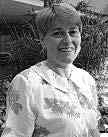 As the current school year draws to a close, I would like to present my version of this year’s top ten reasons (in no particular order) for being a STAO member involved in STAO educational and professional development activities.
As the current school year draws to a close, I would like to present my version of this year’s top ten reasons (in no particular order) for being a STAO member involved in STAO educational and professional development activities.
The annual conference, STAO 2001: A Science Odyssey, continued the tradition as a highly professional science education meeting place with a growing emphasis on technology.
Two regional ScienceWorks workshops have now been held as well as an Astronomy Day and hopefully they will broaden to other regions next year.
Science educators have gathered, focused on issues, produced and delivered meaningful, insightful articles, workshops, and presentations, and continued to provide excellent PD and mentorship.
The STAO Safety Committee’s Be Safe document which addresses safety issues for elementary Science and Technology education is finding its way across Canada. In partnership with school boards, a new document and CD, Stay Safe, is currently in the works.
Partnerships have been established with organizations such as the Elementary Teachers’ Federation of Ontario, the Science Consultants and Coordinators Association of Ontario, and the Ontario Society for Environmental Education to provide quality professional development and curriculum delivery.
The 2001 elementary calendar and Extremely Elementary are informative, interesting, and hopefully the beginning of a long tradition. o STAO members have provided Ministry of Education workshops throughout Ontario, have been involved in summer institutes and have produced quality resources for the implementation of the secondary curriculum.
STAOCom continues to produce a great magazine with articles that you have submitted, and www.stao.org seeks to take an expanding role by posting relevant information to the membership.
In an effort to further communication among the membership, STAO Board, Executive and committee members are now communicating using First Class and soon you will easily be able to reach members by firstname_lastname@stao.org
Most of all, it is fun to meet with enthusiastic, dedicated and knowledgeable educators of all grade levels and share experiences, challenges and successes as everyone works through the new curriculum. As STAO members gather to share, learn and mentor effective pedagogical strategies, excellent science-education materials, and innovative ways to bring science and technology best practices to the classroom continue to benefit all Ontario’s students! As I end my term as STAO President, I wish to extend my sincere gratitude to the STAO Executive and Board for their support and encouragement. I have had the privilege of their experience and their enthusiasm and look forward to continue working with them in a different capacity. To all committee members who produce this magazine, workshops, calendars, conferences, the Website, focus groups, etc., to our honorary president, Don Galbraith, thank you – merci bien – your commitment has exemplified service and leadership! To Marietta Bloch, our incoming president, and the upcoming STAO Executive and Board, my best wishes for a successful 2002-2003.
On behalf of the Board, thank you, the members of STAO, for your commitment to excellence and learning, and for your continued dedication to the students of Ontario. Have a great summer and I look forward to sharing with you next year.
2003 - Mars Bloch
 The summer is rapidly approaching and as you read this edition of Crucible, the school year is winding down and so is my year as STAO President! It has been a rich and fulfilling year to have the privilege of being President of this incredible organization. This year we set goals for ourselves to align STAO’s policies and procedures to reflect the many facets of the organization. I feel we are in good shape to reach out to advocate for issues that are important and critical for excellence in student learning of elementary science and technology and of secondary sciences.
The summer is rapidly approaching and as you read this edition of Crucible, the school year is winding down and so is my year as STAO President! It has been a rich and fulfilling year to have the privilege of being President of this incredible organization. This year we set goals for ourselves to align STAO’s policies and procedures to reflect the many facets of the organization. I feel we are in good shape to reach out to advocate for issues that are important and critical for excellence in student learning of elementary science and technology and of secondary sciences.
There continues to be many challenges in education – the past several years have not been easy and cutbacks are taking their toll. Although the Ministry curriculum policies for elementary science and technology and for secondary sciences have been released fro several years, reduced funds for professional development are not adequate to provide teachers with the training to implement curriculum and assessment as intended. STAO recognizes the importance of professional development, and Malisa Mezenberg provides direction in her role as STAO Professional Development Coordinator. For example, the ScienceWorks Committee is reviewing existing ScienceWorks workshops and will be revising and reviewing many of these to provide professional development to teachers by modelling hands-on/minds-on programs. Watch for ScienceWorks workshops at STAO 2003!
School staffing models often result in larger class sizes in science. STAO remains concerned about increased numbers in science classrooms and the effect on ensuring safe learning and working environments for students and teachers. The STAO Safety Committee has revised STAO’s position paper on class size in science laboratories to reflect Ontario Secondary School Reform. You can find the revision on page 26 and also on the STAO website http://www.stao.org/ . STAO will continue to advocate for class sizes that allow for safe and effective teaching and learning in science laboratories.
Increased emphasis on elementary literacy and numeracy often results in decreased time for teaching science and technology. Yet science and technology can provide excellent contexts for developing skills related to literacy and numeracy. STAO will continue to advocate for strong elementary programs in science and technology. This year, STAO’s Elementary Committee developed a partnership with ETFO (Elementary Teachers Federation of Ontario). If you are an elementary member watch for the ETFO’s June issue of Voice which has an emphasis on science and technology and includes several articles written by STAO committee members. Also watch for the work of the elementary committee in the writing and development of the STAO Science and Technology calendar that will be mailed out to all elementary schools in September 2003. Thanks to Merck Scientific for their generous funding of this calendar and special thanks to Chuck Cohen, STAO’s External Relations Chair for his tireless pursuit of networking with potential partners so that STAG can provide more for its members.
The coming year may have new challenges. The April Throne speech briefly mentioned that experts in various disciplines (e.g., technology, arts, etc.) might be allowed to teach without going through qualified teacher education programs. Although content experts can play an important role in education, there is a dangerous’ assumption that just because you know something means that you can teach it. This negates the knowledge and skills of teaching as a profession. We must pay attention to how this develops in government policy.
At this time I would like to express my appreciation to members of the Executive, Board and committees for their support. The dedication of all involved makes the organization strong and has ensured its survival since 1890! I encourage you to become involved in STAG by either e-mailing info@stao.ca or by contacting the regional councillor for your area. Active involvement makes STAG a strong organization and a strong voice for elementary science and technology and the secondary sciences.
2004 - Maurice Di Giuseppe
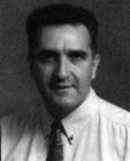 It’s about 10 am on a Tuesday morning in May, and I’m sitting in a very large room with several hundred fellow citizens on a five-day round of jury duty. As I look around, I’m surprised at how many of us have brought our computers and set up little workstations here and there. Boy, have times ever changed! Only six years ago when I did this last, there wasn’t a laptop in sight. These days we can sit almost anywhere in the world and tap away on a keyboard as though our lives depend on it. But with this issue of Crucible in development and an anxious editor on my tail I thought I’d better get at it or miss yet another “drop-dead” deadline. Nothing gets in the way of STAO business! Such has been my year as president of STAO. It’s been busy, demanding, hectic, tiring, challenging, lively, inspiring, but most of all, exciting. Just the way I like it!
It’s about 10 am on a Tuesday morning in May, and I’m sitting in a very large room with several hundred fellow citizens on a five-day round of jury duty. As I look around, I’m surprised at how many of us have brought our computers and set up little workstations here and there. Boy, have times ever changed! Only six years ago when I did this last, there wasn’t a laptop in sight. These days we can sit almost anywhere in the world and tap away on a keyboard as though our lives depend on it. But with this issue of Crucible in development and an anxious editor on my tail I thought I’d better get at it or miss yet another “drop-dead” deadline. Nothing gets in the way of STAO business! Such has been my year as president of STAO. It’s been busy, demanding, hectic, tiring, challenging, lively, inspiring, but most of all, exciting. Just the way I like it!
As many of you may know, STAO has a long and respected history as one of the oldest science teachers’ associations in North America. However, its age has in no way diminished its organizational strength and vitality. STAO remains a current and vibrant association that is deeply committed to advancing the interests of science education in Ontario. Its strength lies in its people. This year, our hard working committees produced many useful classroom resources that will assist teachers in program delivery, and enhance students’ learning experiences. Internally, committee members have worked tirelessly to implement more effective resource development protocols and communication systems upgrades. As many of you already know, a new STAO Website has been launched, and Crucible has been placed online on a trial basis. If you haven’t already done so, please visit the site and let us know what you think.
As usual, we continue to provide high-quality professional development workshops through ScienceWorks, both at our annual conference and at regional mini-conferences throughout the province. I hope that you were able to attend last year’s STAO conference. It was an exemplary showcase of trends and innovations in science and technology, and best practices in science and technology education. If you didn’t get a chance to go in 2003, make sure you mark November 11-13 on your calendar for STAO 2004. Early plans point to another fantastic conference.
We at STAO are proud of the high quality professional services we provide for our members. However, STAO is increasingly being called on to advocate for science and technology education, especially during this period of curriculum fine-tuning. For example, we recently joined forces with school boards and other subject associations, including SCCAO and OAJE, to help in the development of a much-needed elementary Assessment and Evaluation resource similar to the secondary Policy to Practice document. STAO also played a key role in revising the provincial science and science/technology achievement charts – a first step in the Ministry’s Sustaining Quality Curriculum (SQC) initiative. Our participation in this particular project helped ensure that important aspects of science and science/technology education were preserved as the province moved to standardize the form and content of all provincial achievement charts. Our participation in these and other such activities requires us to advance a position and/or take a stand on important curriculum-related issues. Consequently, we are in the process of formulating two position papers, jointly with SCCAO, to better articulate our views and assist our representatives in these important decision-making activities. One of the position papers is on Literacy in Science and Technology Education, and the other on The Nature of Science in Science and Technology Education. These two publications will go a long way in guiding us as we embark on the SQC review of the science and science/technology curricula beginning in September 2005. Look for both papers on the STAO and SCCAO Websites in the new year.
A serious issue of critical importance to all of us, including STAO, involves the unacceptably large number of students who, for reasons of inadequate literacy skill development, are at risk of failing a science course, failing the grade 10 literacy test, or dropping out of school altogether. These students are in desperate need of our assistance well before failing grades are achieved. To this end, STAO will be participating in the development of subject specific resources for at-risk students through the province’s Think Literacy project, and will make the development of additional resources a thrust in its 2004-2005 programs and priorities.
At our annual planning meeting last July, we made Outreach the theme for this year’s activities. As a result, we have reached out to our members by enhancing and extending our channels of communication, and by developing position papers that articulate our viewsfellow subject associations. We have reached out to needy students by our participation in the development of resources to help at-risk students. And finally, we are in the process of reaching out to the country as a whole by spearheading the development of a federation of all provincial science teachers’ associations. All of these activities are ongoing, and we look forward to their further development in the coming year.
As this school year comes to a close and my tenure as STAO president comes to an end, I wish you all the best in your personal and professional endeavours, and hope that you too will some day consider serving as an officer in this wonderful and very important association. My year as president has been immensely rewarding, and I look forward to many more years of participation and collaboration with STAO.
Regards, Maurice
2005 - John Henry
 It is June. The end of the semester is fast approaching and so is my term as President. I like to evaluate my own teaching each year, and this semester I taught the workplace science (SNC3E) for the first time. It was very frustrating. I had a very large class and the absentee rate was fantastic – about 50 per cent – and the missing students were NOT the same every day. I had to arrange the topics in “clumps” to be done in a week. I will try to make the course more suitable next year, based on my experience with it this year.
It is June. The end of the semester is fast approaching and so is my term as President. I like to evaluate my own teaching each year, and this semester I taught the workplace science (SNC3E) for the first time. It was very frustrating. I had a very large class and the absentee rate was fantastic – about 50 per cent – and the missing students were NOT the same every day. I had to arrange the topics in “clumps” to be done in a week. I will try to make the course more suitable next year, based on my experience with it this year.
When I try to use the same process with my role as President, I cannot improve because I will not be the President next year. The question is, what have we achieved as an organization and where can we improve?
There have been many changes in STAO, especially how we communicate with our members. The website has been professionally designed and it has been very successful. We have used the website for two surveys, one that dealt with the issue of providing Crucible online. Members expressed their concerns about not having a print copy of Crucible. STAO will be reviewing this issue next year after further input from our members. We will then be able to make a decision on the print/online ratio of the Crucible.
The Secondary Committee, in preparing for the curriculum review, asked members to complete an electronic survey which will be used as the basis for our position paper. Personally, my concerns are with the Applied and College Courses. The science curriculum does not meet the needs of a large percentage of our students. The College Courses are excellent courses, but the level is very high and leaves out a large number of students who used to take the old “General Level” courses. Again, personally, for Grade 9 and 10 Applied I believe we do not have enough resources at the students’ level. In summary, however, I feel the Secondary Curriculum is quite good and the changes will be implemented with little difficulty.
My real concern is with the Elementary Science and Technology Curriculum. The Elementary Federation did a survey of the implementation of the new curriculum. The results were not unexpected. Science and Technology were the least implemented of all the subjects, especially in Grades 4-6. The Technology component of the curriculum was especially a serious concern. When considering the reasons for this, I think there are a number of major factors overlapping each other. The factors are the teachers, students, time and materials. The curriculum is the most difficult I have ever seen, in terms of both student learning and the understanding needed by teachers.
There is no suggested teaching time by the Ministry for Science and Technology. Across the province the time varies from 40 hours to 110 hours, with no consistency in what is being taught. Science and Technology should be a hands-on subject and this will only occur if the materials are readily available and easy to use. This is not happening across the province. Personally I have no solutions for these problems and I hope the review will be able to do this.
I would like to thank you for the honour of being President and I wish you a great summer.
2006 - Chuck Cohen
 Here it is the end of June and this is my last message as President. It has been a good year for me personally both in school and with STAO/APSO. There has not been too much turmoil caused by government or boards. Not many major issues needed to be dealt with either. It sounds like a boring year. WRONG!
Here it is the end of June and this is my last message as President. It has been a good year for me personally both in school and with STAO/APSO. There has not been too much turmoil caused by government or boards. Not many major issues needed to be dealt with either. It sounds like a boring year. WRONG!
Many things have been going on this year: The STAO/APSO 2005 conference was well attended and we had nothing but rave reviews about the speakers and exhibits. The 2006 conference planning is winding down and the conference program will go to press later this summer. Expect to receive your copy in the mail in early September. In addition, the Elementary committee produced yet another great calendar and next year’s will even be better. Thank you must be said to Merck Frosst for their financial support towards the calendar.
On another front, the Ministry did have the initial meetings earlier this year to start the review process. The writing teams have been selected for this summer and I am happy to say that all of the STAO/APSO nominees were chosen. STAO’s communication with members is getting better all the time. The STAO/APSO website continues to grow, as does its use. Crucible and Elements are now becoming more web friendly. The STAO store is growing slowly but surely and ScienceWorks continues to strive. Another exciting happening is that a cross-Canada linkage of Associations is becoming a reality. This will grow over the next few years. Protocols for the writing of position papers were established and a “Nature of Science” position paper was accepted.
All committees have worked extremely hard over the past year. I want to thank all of the members of committees for their dedication on the behalf of all STAO members.
Without volunteers, STAO/APSO would not exist. As I write this message we are still looking for some positions to be filled on the Executive and Board. Please check out our website (www.stao.org) for more details.
Did I accomplish everything I wanted to? No. However I did get plenty done and maybe all my goals were just not attainable in one year. However, I am happy with what was done.
There are two pieces of advice I could give Stephanie Grant as she takes over in September… First, STAO/APSO is rich in expertise and energy. Let the experts do the work and bring in suggestions. Don’t try to do everything within the Executive. Second, enjoy your year!
I would like to thank you for the honour of being President and I wish you a great summer.
2007 - Stephanie Grant
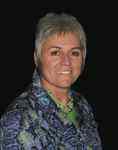 June is here and this is my last message to you as the President. It has been an interesting and busy year with 10 Executive meetings and four Board meetings. I would like to thank the members of both groups for their attendance (sometimes endurance), input and support. Dennis Pare will be taking the helm in September and is currently seeking new faces to replace those who are leaving the infrastructure. If you have the time and the desire to get involved with our volunteer-based association, that not only produces an excellent conference but also workshops, resources and curriculum support for K-12 teachers, please consider getting involved in STAO. It is of course, a most impressive addition to one’s CV! This organization has been in existence for over a hundred years and I have no doubt that it will continue to grow and service teachers for many more years to come, with the support of new members and of those who volunteer their time and talents to serve on one of the various committees.
June is here and this is my last message to you as the President. It has been an interesting and busy year with 10 Executive meetings and four Board meetings. I would like to thank the members of both groups for their attendance (sometimes endurance), input and support. Dennis Pare will be taking the helm in September and is currently seeking new faces to replace those who are leaving the infrastructure. If you have the time and the desire to get involved with our volunteer-based association, that not only produces an excellent conference but also workshops, resources and curriculum support for K-12 teachers, please consider getting involved in STAO. It is of course, a most impressive addition to one’s CV! This organization has been in existence for over a hundred years and I have no doubt that it will continue to grow and service teachers for many more years to come, with the support of new members and of those who volunteer their time and talents to serve on one of the various committees.
Speaking of change, how about our new curriculum? The feedback for the grade 11 and 12 courses has just been collected. How will this analysis impact the 3M and 4M courses? The elementary curriculum will be released in the fall with the rest of the school year open to testing (dabbling) in the classrooms. My interest lies in the revisions of the grade 9 and 10 courses. Are they really going to have a second overhaul based on the analysis of the December feedback? The Motion unit is gone after I finally figured out (in 3 years) how to help them understand the concepts! However, I do love Optics and it is still familiar from OSIS days. for those of you that have been teaching for at least 10 years. Now where did I store that bag of tricks?! However, the point I wanted to make was not what we teach but HOW we teach the curriculum, regardless of the content.
Recently, at our last board meeting, we had a presentation from Thomson Nelson on the release of a new resource called Science Education: A Summary of Research, Theories and Practice – a Canadian Perspective. As I listened to the information on how science education is focussing on scientific literacy through constructivism and experiential learning, one point jumped out at me and I quote, from page 3: “It has been said that science is a highly respected subject but not much loved.” How true it is today! I conduct a little introductory survey with my grade 10 students at the beginning of the course. Not even 20% predict a future in this area, based on the fact that they do “not love” the subject.
I then watched an interview between Steve Paikin (on TVO’s The Agenda) and Natalie Angier on her newest book The Canon and she was basically saying the same thing! I would like to share a quote from her book, which I went out purchased… “Science is not a body of facts. Science is a state of mind. It is a way of viewing the world, of facing reality square on but taking nothing on its face. It is about attacking a problem with the most manicured of claws and taking it down to sensible, edible pieces… What often is missing [in the teaching of science] is the idea of critical thinking, how you assess which ideas are reasonable and which are not.” Food for thought! The good news is that there is time to figure out how to make this happen in your classroom with the new 2008 curriculum. We all want our students to be successful, not only in our class but as informed citizens in the global community. It is our job as teachers of the science curriculum to give them the skills to cope with this responsibility. Here’s to the next generation of life long learners.
2008 - Dennis Pare
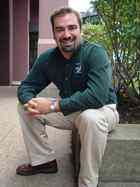 The end of the year is here and I’d like to take this opportunity to thank each and every one of you for all that you have done for your students and for science education. I’d also like to thank the STAO/APSO Board of Directors, all STAO/APSO Committees and the Executive Committee for their hard work. Volunteer organizations like ours are only as strong as those who commit their time, and believe me, we had a strong group of volunteers this year! I’d especially like to take this opportunity to thank Past-President Stephanie Grant, whose term on the Executive is up this summer. Stephanie – you’ve been a great mentor and a wonderful friend and you have given so much of yourself to our Association. Your professionalism and wisdom will be missed at our meetings, but we know where to find you!
The end of the year is here and I’d like to take this opportunity to thank each and every one of you for all that you have done for your students and for science education. I’d also like to thank the STAO/APSO Board of Directors, all STAO/APSO Committees and the Executive Committee for their hard work. Volunteer organizations like ours are only as strong as those who commit their time, and believe me, we had a strong group of volunteers this year! I’d especially like to take this opportunity to thank Past-President Stephanie Grant, whose term on the Executive is up this summer. Stephanie – you’ve been a great mentor and a wonderful friend and you have given so much of yourself to our Association. Your professionalism and wisdom will be missed at our meetings, but we know where to find you!
What a year it has been! The elementary science and technology curriculum was released by the Ministry with references to the STAO/APSO – SCCAO joint position paper on the Nature of Science. We should be proud to know that we have a government that is working with us and not against us. Let’s continue to nurture and grow this relationship!
While the relationships between STAO/APSO and the Ministry are good now, we need to continue to find ways to make these relationships grow. The STAO/APSO membership is the ultimate authority on science education in Ontario – we are the ones that instruct the curriculum, respond to changes in social culture and react to new Ministry initiatives. We hope that the Ministry will consider STAO/APSO as a vehicle for action research in the future and that they will consider funding STAO/APSO learning opportunities that are currently available to members so that we can attempt to reach every teacher in Ontario. Education relating to the environment and environmental stewardship was made a priority last year with the release of the Shaping Our Schools, Shaping Our Futuredocument (the Bondar Report). As such, the release of the elementary curriculum was delayed until December 2007 so that it could be assessed according to draft environmental education standards. The result is a curriculum that focuses heavily on environmental education. Personally, I think this is a good move, so long as we don’t over-emphasize environmental education where it doesn’t fit, resulting in token connections to the environment for the sake of having connections to the environment. For example, grade 5 human organ systems can be about human organ systems. Imagine that! Not the impact of human organ systems on the environment! Students will have the opportunity to learn about the environment in other topics.
As a member of STAO/APSO, you will be thrilled to read that your association has enjoyed another wildly successful year. Our conference was a smash hit and lived up to the reputation established by conferences before it, our Safety Committee is working on producing a DVD to replace the popular video previously available, our store continues to evolve and become more efficient, the Secondary Curriculum committee released an incredible resource for novice science teachers, our Elementary Curriculum committee has been working on creating an online version of its calendar, the Virtual Library continues to evolve and adapt to the requirements of the new curriculum while growing into an extremely comprehensive one-stop shopping site for both elementary and secondary teachers, our on-line Crucibleremains strong and vibrant, ScienceWorks is working to establish new and updated workshops to better meet your needs, and our Regional Councillors continue to act as the face of STAO/APSO in your region. I am certain that every one of these committees would be happy to have your help. If you are interested, send me an email at dennis_pare@stao.org and I’ll direct you to the person you need to speak with. President-Elect Leesa Blake is ready to take over as President in September. I wish you all the best Leesa and hope you enjoy your tenure as President as much as I did. You will be a wonderful President and I look forward to working with you next year.
One last thank you to Paul and Lynda Weese – the friendly voices at the STAO/APSO office. You are the rock of STAO/APSO and your contributions are greatly appreciated. Thank you for caring!
2009 - Leesa Blake
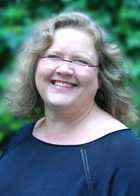 My school year is almost over, and so is my time as President of this subject association. This has been a remarkable year, and I am both staggered by the events of this year, and relieved that I can look ahead to a smooth transition for the fall.
My school year is almost over, and so is my time as President of this subject association. This has been a remarkable year, and I am both staggered by the events of this year, and relieved that I can look ahead to a smooth transition for the fall.
The early fall was full of anticipation: looking forward to the new Science curriculum. The Ministry of Education also presented a new vision of Environmental Education, and are now providing opportunities to focus on pedagogical techniques, including Differentiated Instruction, literacy strategies for Science education, and a consideration of supporting student success for all pathways with the Specialist High Skills Major. Then, the world economy created a new context for what we do.
This year is a turning point for science education in Ontario. Now we start the challenge of designing our courses, selecting new resources and finding the funds to implement new strategies. Is this the best of times or worst of times?
All of the change we face in Science must be considered within the more tumultuous changes around us. A new American president offers hope, but Obama works with multiple crises, all while trying to maintain a stable home for his family, including his young daughters. The twenty-first century does not make our life easier or simpler. With new electronic resources, STAO/APSO provides support to teachers throughout the province, including remote regions.
This year the STAO/APSO Executive traveled to Waterloo to visit the Perimeter Institute and the offices of Research in Motion. RIM provided STAO/APSO with funding that helped to create our first online workshop and and interactive calendar. These free resources are now available to teachers. We hope to follow these initiatives with more electronic resources.
This current educational change is rapid, and dynamic like a storm system. As a teacher in Ontario since 1980, I have worked through many different approaches to the Science curriculum, and I remember some of the notable relics: the Hall-Dennis Report, which shaped me, and Science and Society (OAC). There has been an emphasis on understanding through discovery learning, a focus on teacher accountability, a focus on student success and now the nexus is critical understanding of science ideas.
Through all of the various iterations of my different science classes, I structure my teaching plans, but I work with students. Students are people. This makes the work a complex combination of instruction, listening and observing with building connections to these people. Even with this truth, I realize that today my students are involved, active learners, as they have always been.
As we face change for next year, we can look for ways to take the nuggets from the Ministry’s interest in our work to make our teaching and learning experiences truer to the scientific endeavor. Our students have many different experiences in their years at school: giving presentations, preparing for examinations, and participating in the life of the
school. Without us, though, they would miss the chance to learn the processes of science, and with these processes, develop habits of mind that extend beyond the limits of our courses and our classrooms to the life they will lead beyond the school experience.
2010 - Gerrie Storr
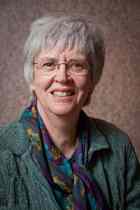 It has been my privilege to be President of one of the most respected professional development associations in Ontario.
It has been my privilege to be President of one of the most respected professional development associations in Ontario.
A major achievement of this past year was the approval of a revised Constitution and By-Laws at last year’s Annual General Meeting. Moving towards this revised structure has been a major focus of our last two years.
We are fortunate to have Bob Crow, Vice President of Research in Motion (RIM), as our Honourary President. Through him, we have continued to develop partnerships.
We were delighted to have Maple Leaf Foods approach us this spring with a request to develop food safety resources for elementary and secondary educators. We are looking forward to a successful rollout of those resources at STAO2010.
A major focus of my term was the recognition of volunteers. We have nearly 100 STAO members who sit on the various committees of STAO. Having our first Congress, at which over 60 of those committee members attended, was a major achievement as we met in the same room for the first time and started working together as a cohesive unit.
As President, I was able to represent STAO at several conferences and other events during the year. One of my lasting impressions of those events was the high esteem in which STAO is held by other organizations.
I would like to thank our Executive Assistant, Paul Weese, who was always available for a consult and a pick-me-up when, occasionally, things seemed to have gone awry. Above all, on behalf of the membership, I want to thank all members of the Executive Committee and the Board for their time, their hard work and their enthusiasm for STAO. Thank you for the opportunity to be part of the leadership of this wonderful association.
2011 - Donna Stack-Durward
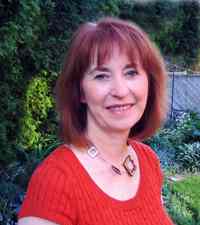 “You need not be clever to succeed, you just need to know one thing no one else does.” James Watson
“You need not be clever to succeed, you just need to know one thing no one else does.” James Watson
STAO’s success is that it provides Ontario teachers with excellent science teaching resources some of which are found nowhere else. It is fast becoming a “one-stop” teacher resource. STAO for me is all about community – peers helping peers grow professionally and personally.
The pace of life has certainly slowed down as I sit to write this in my garden where it is 30°C. Upon reflection, this has been another great year for STAO; I am proud of the professional community we are building for all teachers of science in Ontario. When I came into office last year I continued the transition of the organization’s structure. I have had the privilege of working with extremely motivated and dedicated individuals in my role as President.
The Board of Directors, Officers of the Executive and Coordinators and Committee chairs are to be thanked and congratulated for a great year. First of all let me thank the Executive and all the active committee members of STAO for supporting me this year. It is much easier to take on a leadership role knowing you have the support and help of those around you; they are the most enthusiastic and hardest working volunteers around and certainly the driving force of STAO. Their dedicated to the growth, long-term success, and longevity of our Association is clear. I would be remiss if I did not mention specifically certain individuals who have made this past year memorable and productive. I would like to thank our past president Gerrie Storr, for being there with advice and support; none of us who have ever served as President could have done it without Paul Weese, our Executive assistant, Stephen Houlden, our treasurer and Malisa Mezenberg our PD coordinator. The dedication of these individuals is evident in their years of active involvement on the Executive. A sincere thank you goes to Milan Sanader, Racquel Carlow, Jeff Major, and our newest executive members Joan Jardin and Mahfuza Rahman.
The new STAO Board with 5 members at large from the non-teaching community have shared their individual skills, experiences and offered advise. I thank them for their time and commitment. Check out their biographies on the STAO website.
It’s time to celebrate our successes and at the same time look to how we can put into action our mission and vision statements. One of the key lessons I learned over the past year has been the importance of being sensitive to the needs of the members and working as a team to get things accomplished. Let me take a moment to highlight a few of the projects STAO has been involved in 2010-2011. We held our first Annual Congress, where over 50 committee members met to vision and plan for the year. I was happy to Chair the Planning Committee for this event and I wish Malisa Mezenberg, and this year’s planning committee every success. A new Fire Safety Resource is being produced, funded by the Ministry of Education with Denis McGowan as the project manager. A new Financial Literacy Resource is being written with Jeff Major – our Curriculum Coordinator as project manager, this will provide resources that support the Ministry of Education’s latest initiative for both elementary and secondary teachers. Both these projects are set to role out in the fall of 2011. The Food Safety Resources, sponsored by Maple Leaf Foods, and a new Astronomy resource in partnership with Dr. Percy and U of T are now available to teachers on our STAO website. Speaking of the Website, it is undergoing some major construction under the direction of Dave Erb and his committee (sincerest thank you for all your work), we look forward to its continued evolution. We also have a new safety resource –Safe On Science to replace the previous secondary resource. School boards across the province have been invited to purchase rights for its use in their schools. If your school has not signed up yet, it is not too late. STAO’s 2010 conference was a great success and I wish Gerrie Storr and Stephanie Grant equal success with the upcoming 2011 conference. Check out the website for details – I hope to see you there!
2011-2012 looks to be another banner year for STAO, you can expect your Board to continue to offer advice and the Executive to oversee the daily operations of the association. Our numerous committees are looking for volunteers – I encourage you to get involved and stay connected through committee work. Check us out at the Conference or go to our website for details.
To our incoming president Milan Sanader, one word of advice – OK maybe more than one, reach out to the membership and elicit their feedback, the job is so much easier when we are working as a team. Milan, I wish you the very best in your new leadership role. STAO has the resources in people, creative ideas and history to continue to build on our successes. Milan, I wish you the very best in your new leadership role.
In closing, thank you for allowing me to serve the members of STAO as a Board member and as President. I look forward to continuing my involvement with the STAO as Past President. Save me a seat at the President’s luncheons!
2012 - Milan Sanader
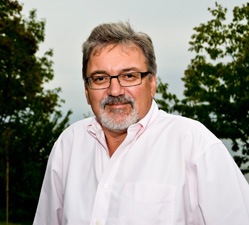 I began this year with a great deal of nervous anticipation. Could I live up to the expectations and responsibilities of guiding such an important organization? As I rolled up my sleeves to begin, I was quickly reminded of the depth, skills and support of our cohesive executive team. The operation of STAO/APSO is clearly a team effort. I thank my Exec colleagues for their mentorship, dedication and support in guiding STAO/APSO during my tenure as president.
I began this year with a great deal of nervous anticipation. Could I live up to the expectations and responsibilities of guiding such an important organization? As I rolled up my sleeves to begin, I was quickly reminded of the depth, skills and support of our cohesive executive team. The operation of STAO/APSO is clearly a team effort. I thank my Exec colleagues for their mentorship, dedication and support in guiding STAO/APSO during my tenure as president.
During the past year, STAO/APSO progressed in several operational areas. Firstly, STAO/APSO is finally comfortable in the role and function of our governance board structure. Our board of directors and particularly our members at large have been invaluable to helping us focus on what we do best. Their guidance has resulted in clear and measureable strategic directions for the organization. It also has resulted in a “scorecard” which we use to prioritize and assess our work. Effective use of the scorecard allows all committees to focus their valuable time and energy on tasks that are manageable and a clear benefit to members. It also allows us to recognize and celebrate our success in completing these tasks.
We also have several initiatives in place to attract new members. These include:
• Resource writing projects are a great way of getting educators into the organization. In fact, several STAO/APSO committee members are with us because of their initial involvement in a STAO/APSO writing team.
• A school-based membership which allows all the members of a secondary school science department could be made members of STAO/APSO for $113 or $169.50, depending of the school. The elementary school membership allows the entire staff to be members for $113. So far, over 90 schools have opted for this membership.
• Faculty of education. Teacher candidates at Ontario education faculties can purchase a two-year membership for $28.50. We have also provided free access to the member’s area of the website to all teacher candidates during their year at the faculty.
• Perhaps our most significant membership initiative is a rebranding of STAO/APSO through the work of Kite String, a Hamilton-based marketing firm. Rebranding and retooling our web-presence will give us the new look and electronic resources to stay connected and relevant to our clients.
STAO/APSO clearly has been and will continue to be a prominent player in specific niches, e.g., curriculum advocacy and safety issues. At present, I question whether we have the depth and nimbleness to be the “go to” place for “all things science” in Ontario education.
Challenges for the organization: Although I am pleased with the progress made during the past year, several organizational challenges remain including:
• Inertia to implementing changes
• Providing PD alternatives to the November conference
• Can we realistically be the one-stop place for science education in Ontario? Or, do we pick our spots and do them exceptionally well
• Maintaining an adequate pool of candidates for leadership roles
• Membership, especially at the elementary level
• Updating the mandate of committees when required to maintain their relevancy
• Updating the pipeline of products and services available to our members. STAO/APSO membership should be a “no-brainer”.
My year at the helm of this wonderful organization has truly been rewarding and satisfying. I owe much of this experience to the support and dedication of the members of the board, exec and committee chairs. In particular, I am grateful to Donna Stack-Durward, Gerrie Storr, and Paul Weese for their wisdom and mentoring.
2013 - Racquel Carlow
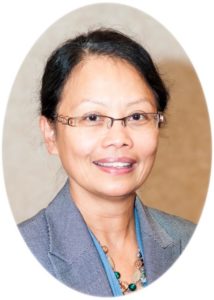 Even after 33 years of teaching, I still get excited about September. There are new scientific discoveries to share with my students, new technologies to play with in the classroom, and innovative techniques to employ that will inspire and influence young minds to dream big. September 2012, however, was even more exciting because, as president of STAO/APSO, I had the opportunity “to give back to the teaching profession” by volunteering my time and talent on behalf of the science and science & technology teachers of Ontario.
Even after 33 years of teaching, I still get excited about September. There are new scientific discoveries to share with my students, new technologies to play with in the classroom, and innovative techniques to employ that will inspire and influence young minds to dream big. September 2012, however, was even more exciting because, as president of STAO/APSO, I had the opportunity “to give back to the teaching profession” by volunteering my time and talent on behalf of the science and science & technology teachers of Ontario.
I am proud and humbled to be part of such an organization. STAO/APSO’s vision is clear — to be the leading voice in the advancement of science education in Ontario. The association channels its resources and processes to realize this vision.
The third annual STAO/APSO Congress was held on August 20 and 21, 2012 to plan the strategic direction of the association for the year ahead, so that “what we know” as an association was clearly linked to “what we do”. As the president, I selected professional development and membership to focus the committee activities for 2012-2013. It is evident from this annual report that many of the activities of the committees indeed focussed on these two strategic directions.
I also had the opportunity to speak on behalf of the association to the media. I was interviewed for a Media Planet article (which was published in the National Post) on the state of Science, Technology, Engineering, and Math (STEM) education in Ontario. I also was interviewed on CBC Radio on three different occasions: Here and Now, Metro Morning, and Ontario Morning. Although personally very stressful, I welcomed these opportunities to increase public awareness of STAO/APSO’s mission and vision.
Another remarkable ‘perk’, and one that I have come to value very much, is the opportunity to meet individuals who are committed to encouraging excellence in science education through leadership and service.
I would be remiss if I did not thank the members of the Executive Committee and the Board of Directors for being extremely supportive during my tenure as president, particularly Milan Sanader and Paul Weese, the Executive Assistant. And I want to extend to Brian Jubenville this same support during his time at the helm of the association.
Although my term as president came to an end on August 31, 2013, I do not plan to ride into the sunset. There is still much to be done to help the association continue to bring science to life. I encourage all science educators to always be prepared to inspire these young minds that are entrusted to us and to engage them to excel in science and in science & technology. Continue to connect and share ideas with other science educators not just during the conference but through the various STAO/APSO social media platforms. Individually, we are great but connected we can be excellent. As stated by a very wise individual, “Do, or do not; there is no ‘try'”.
2014 - Brian Jubenville
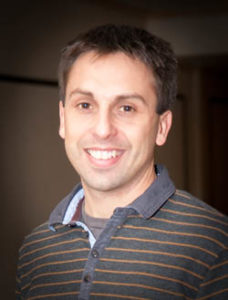 It has certainly been an incredible opportunity to be the President of such an outstanding association. STAO/APSO is impressive. Through my experiences representing STAO/APSO at various events this past year, I have come to appreciate the accomplishments of our association. STAO/APSO is one of the largest and most successful science teaching associations in North America. I have also accepted several compliments this year on behalf of our Conference Planning Committee; the STAO conference not only stands out as a premiere science professional learning opportunity, but also it is also hailed as one the best organized conferences around.
It has certainly been an incredible opportunity to be the President of such an outstanding association. STAO/APSO is impressive. Through my experiences representing STAO/APSO at various events this past year, I have come to appreciate the accomplishments of our association. STAO/APSO is one of the largest and most successful science teaching associations in North America. I have also accepted several compliments this year on behalf of our Conference Planning Committee; the STAO conference not only stands out as a premiere science professional learning opportunity, but also it is also hailed as one the best organized conferences around.
This leads me to my next point. I am so impressed by the volunteers on our STAO/APSO committees. Each person contributes such significant time and energy, and so many continue to contribute year after year. I know that we do it because of the great relationships that we share and for our collective passion for bringing science (and technology) education to life.
With my opportunity to lead this past year, I felt it was important for our association to focus on ways that we might support our members beyond our amazing conference. What can we do to support our members year round? I believe it is our role to help bring this curriculum to life and to have these resources available to our teachers, as needed. Every day throughout our province, teachers are facilitating creative and engaging learning experiences for our students. I have spent a lot of time wondering how we can capture these ideas so that we can show each other what effective and engaging teaching and learning can look like. At this year’s Curriculum Forum, hosted by the Ministry of Education, the theme was “Research into Practice”. A key message from the day was about the important role of subject associations to support the implementation of the curriculum and the need to deprivatize education. We were encouraged to break down silos and explore partnerships.
Our association hosted a multi-association meeting in the summer of 2013 which has ultimately led to numerous reciprocal agreements. Many of the se associations are also participating in our Elementary Extravaganza event at STAO 2014. We have also explored partnerships with school boards. STAO/APSO has the structure, experience, process, and most importantly the skilled people to lead such projects and partnerships.
STAO/APSO also strives to find the best way to connect our members, and the larger science education community. Resources are important, but we need other means for our teachers to share ideas. This year we decided to explore and launch the STAO Blog as a modern alternative to our online magazines, Crucible and Elements. We have now formally established a social media committee whom are working diligently to populate and promote our channels as valuable venue for professional growth.
STAO/APSO has a strong history of promoting safety in Ontario schools through our safety reference guides, workshops, and other publications. This year we released Safety in Elementary Science and Technology. This resource has been very well received and has become an important component of many school board safety plans. We also developed a grade 11 and 12 demo resource with a focus on safety mindedness.
Our Board of Director’s lead a STEM initiative. In September, STAO/APSO hosted a professionally facilitated meeting of 28 key players of STEM education in Ontario. From this meeting, the facilitator provided us a report with seven recommendations. We narrowed these recommendations down to three and requested a meeting with the Minister of Education to present our STEM report (see appendix 1), with a focus on the three recommendations and to advocate for the advancement of STEM education in Ontario. Minister Liz Sandals met with myself and MAL Tony Vannelli this past summer. Our report and recommendations were very well received. Minster Sandals talked extensively about her ministry’s vision for 21st century learning and we discussed how STEM education might advance through this vision. She also highlighted the importance of developing leaders in science education and the importance of inspiring our students early. As a result of this meeting, Minister Sandals suggested a meeting with her Deputy Minister Mary Jean Gallagher to further discuss the Ministry of Education’s vision and to explore opportunities to advance STEM education within this vision.
Thank you to each person whom comprises our STAO/APSO committees. Each of your contributions is a key to our overall success. Together we will continue to survey the needs of our members, and we will work collaboratively to share great ideas and best practices to bring science (and technology) education to life in classrooms across Ontario.
2015 - Gerrie Storr
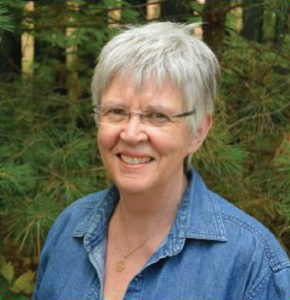 My focus this year will be to explore initiatives that will support our members 365 days a year. We know that you count on our STAO conference for outstanding professional learning and networking opportunities; however, we are also mindful that our members want these opportunities and support the other 362 days of the year, as well.
My focus this year will be to explore initiatives that will support our members 365 days a year. We know that you count on our STAO conference for outstanding professional learning and networking opportunities; however, we are also mindful that our members want these opportunities and support the other 362 days of the year, as well.
Over this past summer, past president, Racquel Carlow formed a social media committee which created our Google + STAO Community. Recently, we created “categories” within our Google + STAO Community so that teachers can filter the content based on their grade assignment(s) and interest. We hope the STAO Community will provide the opportunity for you to connect you with other Ontario Science and Technology teachers who are teaching the same grade and/or course to build your own professional network within your Google+ circles. Our vision is that the STAO community will allow our members to share ideas, activities, files (via Google Drive), web links, and anything else valuable to support each other as we work to engage and inspire our students.
As an elementary educator I am particularly interested in connecting with other creative elementary teachers with a passion for teaching elementary Science and Technology. If you share this passion and creativity, even if you have your one favourite unit that you love with a few neat ideas to share, please consider connecting with me to discuss writing opportunities within STAO. Do great resources already exist to support elementary Science and Technology teachers or do you feel that STAO needs to develop these resources?
Let me know how STAO can help you transform your teaching from great to excellent.
2016 - Ralph Chou
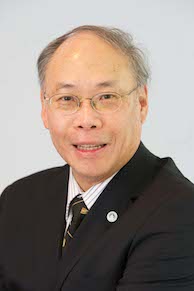 Although this school year began with a lot of uncertainty over contract negotiations in the school system, STAO/APSO has continued to develop new ways to support Ontario Science and Technology teachers.
Although this school year began with a lot of uncertainty over contract negotiations in the school system, STAO/APSO has continued to develop new ways to support Ontario Science and Technology teachers.
-
The new Promotions Committee has supported the Google+ STAO Community as well as blog postings and Twitter feeds.
-
The Board has recently approved establishment of a Beginning Members Advisory Group which will be made up of members with less than 10 years of teaching experience. It is hoped that the BMAG will serve as a catalyst for future growth of STAO/APSO by engaging new teachers in STAO/APSO activities, and suggesting ways that the organization can address issues of importance to beginning classroom teachers.
-
The migration to our new website is nearly complete.
-
Three major projects funded by NSERC PromoScience and the Ministry of Education are developing innovative methods and online resources to help teachers deliver the science curriculum to Ontario students at all levels.
-
Plans for STAO2015 are proceeding and I hope that you will find this year’s conference program provides you with the outstanding professional learning and networking opportunities that you have come to expect. We will be celebrating STAO/APSO’s 125th anniversary each day of the Conference, so be sure to leave some time to join the festivities.
As a post-secondary educator and researcher, I appreciate the challenges that elementary and secondary teachers face in delivering the science curriculum to today’s students. Not only must they develop scientific knowledge, skills and critical thinking in students, but also the ethics of practising science. Integrity of data is not the only issue; how scientists treat their research subjects and each other is equally important. It is troubling to read about retraction of journal articles and misbehaviour of individuals who have been considered leaders of the scientific community. Watch for more from your professional organization on this topic.
STAO/APSO has changed a lot since I joined over 30 years ago, but it continues to be a community where teachers can share ideas, classroom activities, and resources that will help them engage and inspire students. By participating in this community, I hope you will find the support that will transform your teaching from great to excellent.
2017 - Jocelyn Paas
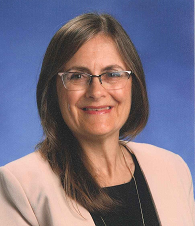 I count it a tremendous privilege to continue to serve you as the STAO President through 2017. The mission of STAO, to encourage excellence in science education, is paramount and I am grateful to be a part of this dynamic community.
I count it a tremendous privilege to continue to serve you as the STAO President through 2017. The mission of STAO, to encourage excellence in science education, is paramount and I am grateful to be a part of this dynamic community.
My journey with STAO began as I attended the STAO Fall Conferences as a secondary science and senior biology teacher for many years. I gained a deep respect for the professional development I received. My teaching was transformed through ideas that I learned at workshops at the conferences. I found inspiring ways to engage my students and discovered that my courses became more fun and interactive. Joining the STAO community has been the best thing I have done for my development as an educator. I encourage you to jump in and take advantage of all the resources available through STAO.
This is an exciting time to be a science educator! STAO will help you be on the cutting edge of innovation and social media networking. There are many opportunities to be connected with the science education community through social media, following STAO on twitter, Facebook, and Google+. The STAO2017 conference offers new initiatives to address the changing needs in science education. I am looking forward to seeing you at the conference very soon.
You are a world changer as you help open the eyes of your students to the way science discoveries can address current needs and pave the way for a sustainable future. It is my hope that STAO will be the lifeline for your professional support this year. I am grateful for your commitment to the mission of STAO. The benefits of your membership are not yours alone but, collectively, we further the impact that science educators have throughout Ontario and beyond.
2018 - Karen Dodds
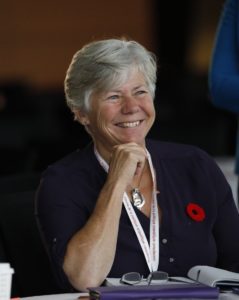 It is an honour and privilege to serve you as the STAO President for 2018. Part of the mission statement of STAO is to encourage excellence in science education through leadership, service and to be a leading voice in the advancement of science education.
It is an honour and privilege to serve you as the STAO President for 2018. Part of the mission statement of STAO is to encourage excellence in science education through leadership, service and to be a leading voice in the advancement of science education.
Over ten years ago, as a secondary school senior biology and chemistry teacher, I attended the STAO Fall Conference as a delegate, then presented with a core of my colleagues at STAO conferences and started volunteering with the organization. What amazes me about the STAO organization is the dedication from the STAO volunteers, the amount of resources offered on the website, the vast array of speakers at our conferences. All which help you as educator to gain ideas, collaborate, and participate in professional development, to engage and inspire your students and fellow educators.
STAO is a dynamic community and works with other stakeholders such as the Ministry of Education contributing to the development of resources and the continued evolution of science education. Take a look at the STAO website for the resources available to Science Educators from Project Innovation, STAOConnex, Science Workshops, Demos, and Safety resources to just name a few.
Our fall STAO 2018 conference will be hosting interesting, energizing, innovative sessions. The conference is an occasion to meet a diverse community of science educators from all disciplines, a time to network, collaborate, plan, discover, stimulate ideas, all with the love of science education. Your membership in STAO offers many benefits throughout the school year.
One of the many strengths of STAO is the overwhelming general scientific knowledge that exists in our organization that works collaboratively to disseminate the effective use of scientific education to our various communities. We welcome all interested educators to be part of our organization, not only will you gain insight in the many resources that are offered but will be part of a dedicated group to continue to develop new innovated resources.
We as Science educators are active participants in the science education of our students. The discoveries, professional development you gain through STAO can make life long contributions in education in our science classes. It is my hope that you join us to supplement your professional development in STAO to impact the education of our youth. Thank you for your commitment to encourage excellence in science education.
2019 - Nathalie Rudner
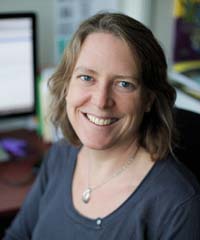 Nathalie Rudner, Past President, is currently teaching Grade 9 and 10 Applied and Academic science with the York Region District School Board. Her passion for science and her belief that every student should be scientifically literate have driven her to continuously explore ways to create engaging learning environments for students. Nathalie has been involved with STAO for many years, including acting as Program Co-Chair and STAOPlayground Chair for the annual STAO conference. Nathalie has extensive experience as a regional Curriculum Consultant for the YRDSB, delivering professional development in Science and Environmental Education to teachers from Grades K-12.
Nathalie Rudner, Past President, is currently teaching Grade 9 and 10 Applied and Academic science with the York Region District School Board. Her passion for science and her belief that every student should be scientifically literate have driven her to continuously explore ways to create engaging learning environments for students. Nathalie has been involved with STAO for many years, including acting as Program Co-Chair and STAOPlayground Chair for the annual STAO conference. Nathalie has extensive experience as a regional Curriculum Consultant for the YRDSB, delivering professional development in Science and Environmental Education to teachers from Grades K-12.
She is a skilled facilitator of teacher learning around modern learning, design thinking, inquiry based learning, differentiated instruction, STEAM, adolescent literacy, the use of technology in the classroom, and environmental education. Nathalie has experience as an instructor for York University, delivering STEM education workshops for the Chaoyang Bureau of Education in Beijing. Nathalie was a former chair of the Science Coordinators’ and Consultants’ Association of Ontario (SCCAO now SELO). She currently is the Youth Science Canada Regional Coordinator for York Region and runs the York Region Science and Technology Fair at York University every spring. In 2009, Nathalie was awarded the Prime Minister’s Award for Teaching Excellence for her use and promotion of technology in the classroom. When not marking, prepping, or volunteering for STAO, Nathalie can be found cheering on her son at the hockey rink, supporting her daughter at dance competitions, and travelling with her family.
2020 - Lise Gravelle

Lise Gravelle has been a high school science teacher with the Conseil des écoles publiques de l’Est de l’Ontario since 2005. During her career, she had the opportunity to work with her colleagues as an educational coach for two years and is currently teaching at ESP Barrhaven in the Ottawa area.
She decided to join APSO in 2018 to support the organization in its efforts towards bilingualism and wishes to promote the involvement of francophone science teachers within their subject association. Lise advocates the experimental approach by exploration in science, integrates eco-responsible options in laboratory activities and favors an interdisciplinary approach S.T.E.A.M. (Science, Technology, Engineering, Arts and Mathematics) within her classroom.
Always eager to try a new creative approach to teaching, she thrives on professional development opportunities. She treasures her little family which consists of her son Adrien, her husband André and her beloved pooch, Kiki. When she is actually taking some time to rest, she takes leisurely walks, paints watercolours and meets with friends at a local coffee shop.
2021 - Nina Saini
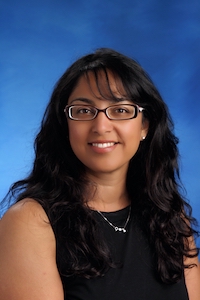 As my term as president closed, I found myself reflecting on this past year and how much we have accomplished as a teaching community. Through the difficulties and ever-changing landscape of education in Ontario, we have triumphed. We were there for our students when they needed us most, not only to teach them the curriculum but also to lead by example. We have SHOWN them what it takes to succeed when it seems like the road ahead is getting steeper by the step. We have led by example day after day with our relentless efforts and creativity. We have supported each other, our students, and our communities while separated by masks and shields or computer screens or both. We have made every effort to be inclusive and generous while being bombarded with images and stories of exactly the opposite. WE did that. For some, we made all the difference in the world. I want to take this opportunity to applaud you and remind you that it was worth it.
As my term as president closed, I found myself reflecting on this past year and how much we have accomplished as a teaching community. Through the difficulties and ever-changing landscape of education in Ontario, we have triumphed. We were there for our students when they needed us most, not only to teach them the curriculum but also to lead by example. We have SHOWN them what it takes to succeed when it seems like the road ahead is getting steeper by the step. We have led by example day after day with our relentless efforts and creativity. We have supported each other, our students, and our communities while separated by masks and shields or computer screens or both. We have made every effort to be inclusive and generous while being bombarded with images and stories of exactly the opposite. WE did that. For some, we made all the difference in the world. I want to take this opportunity to applaud you and remind you that it was worth it.
To the world, you are an educator. To students, you are the world.
Your 2022-2023 President, Mahfuza Rahman, is known and held in high regard both within STAO, as a long-time, active member as well in the greater educational community. After working with her, I can confidently say that her reputation has been understated. She is energetic, knowledgeable, and experienced. You are in good hands, friends.
I would like to thank Lise Gravelle, our outgoing Past President, for the unforeseen amount of work and time she was required to put in during this term. She was a guiding light and I could always count on her support and experience while we navigated new challenges.
Finally, to our Board Members: thank you. Thank you for the consistent support through countless email responses and additional meetings that were needed this past year. I appreciate your time and expertise.
I am proud to be an Ontario Educator. I am proud to be a STAO member. I am looking forward to what we can continue to accomplish together.
With Appreciation,
2022 - Mahfuza Rahman
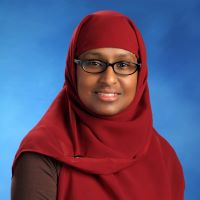 Mahfuza Rahman is the acting Coordinator for Mathematics, Science, STEM and Robotics for the Toronto District School Board. In the past 20 years, she has been a teacher of math, various sciences, a guidance counsellor, a teacher-librarian, and hybrid-teacher digital lead learner; Mahfuza brings all these experiences to her current position to support educators in building global competence, a community of critical, innovative learners and scientifically literate citizenry. Mahfuza has been a member of STAO since 2000 and held various roles within the organization such as Regional Counsellor, Conference Program Co-Chair and Secretary. She has also supported various STAO committees and events during her time with the organization.
Mahfuza Rahman is the acting Coordinator for Mathematics, Science, STEM and Robotics for the Toronto District School Board. In the past 20 years, she has been a teacher of math, various sciences, a guidance counsellor, a teacher-librarian, and hybrid-teacher digital lead learner; Mahfuza brings all these experiences to her current position to support educators in building global competence, a community of critical, innovative learners and scientifically literate citizenry. Mahfuza has been a member of STAO since 2000 and held various roles within the organization such as Regional Counsellor, Conference Program Co-Chair and Secretary. She has also supported various STAO committees and events during her time with the organization.
